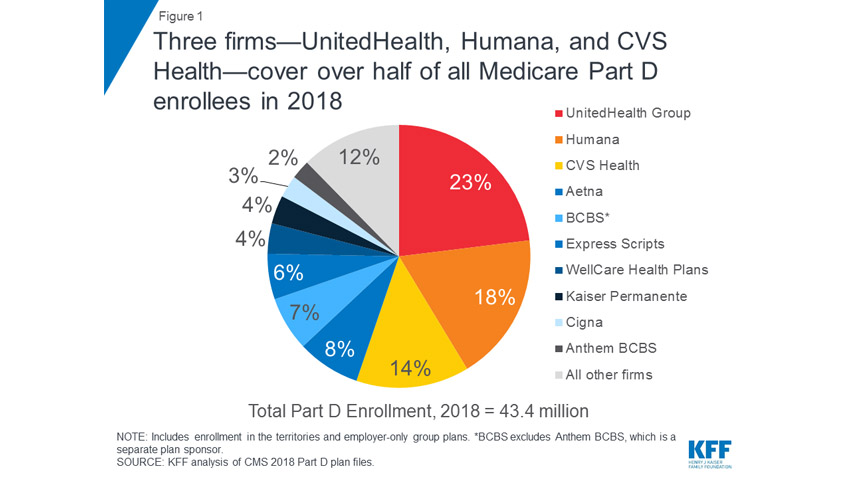Last week, the Medicare Rights Center submitted comments to the Center for Medicare & Medicaid Innovation (CMMI) in response to a request for information on a potential new Medicare model. CMMI—an offshoot of the Centers for Medicare & Medicaid Services (CMS), which is the agency that oversees the Medicare program—was created to develop and test new ideas in health care delivery. Most of these ideas involve different ways of paying providers such as doctors or hospitals.
In this request for information, CMMI asked interested parties to provide input on ways to design and test a model for Direct Provider Contracting (DPC). In a DPC model, a beneficiary could choose to join a primary care or specialty provider’s practice and potentially gain certain benefits such as reduced cost sharing or increased services that Medicare does not generally pay for. While this idea may be intriguing, CMMI did not provide any detail on how such a model would work, which leaves some dangerous options on the table.

This week, the Centers for Medicare & Medicaid Services (CMS) expanded the time-limited equitable relief opportunity to people who are enrolled in Marketplace plans but could have enrolled in Medicare Part B during their Special Enrollment Period (SEP), which was available to them after they lost their or a spouse’s job-based insurance.
Read More
A recent report from the Kaiser Family Foundation (KFF) examines Medicare Part D data from the Centers for Medicare & Medicaid Services (CMS). The resulting analysis presents findings on Part D enrollment, premiums, and cost sharing in 2018, as well as key trends over time.
Read More
This week, Avalere Health, a Washington DC-based consulting firm that specializes in strategy, policy, and data analysis, released a study on the impact of moving the coverage of some drugs from Medicare Part B to Part D. While most drugs are covered under the Part D prescription drug program, Part B, the part of the Medicare program that covers outpatient medical services like office visits, covers a few. The drugs covered by Part B are usually ones that beneficiaries would not give to themselves. For example, if a provider administers the drug during an office visit, Part B instead of Part D, might cover that drug.
Earlier this month, the Trump Administration announced it would consider transitioning certain Part B drugs into Part D as part of a larger strategy to lower drug prices and out-of-pocket costs. This makes it essential to understand what effects the switch could have on people with Medicare.
Read More
On Friday, President Trump and U.S. Department of Health and Human Services (HHS) Secretary Azar outlined the Administration’s strategy to reduce drug prices. The Administration further described the plan, “American Patients First,” in a blueprint document also unveiled Friday.
The much-anticipated plan is a mix of existing policies laid out in the Administration’s 2019 budget request, as well as some new ideas designed to drive down drug prices and lower costs. Though neither the speech nor the blueprint offers much detail about the Administration’s next steps, there are several aspects of the plan that could significantly impact people with Medicare. This includes potential changes to how certain drugs are covered by Medicare, as well as proposals to reconsider the obligations of Pharmacy Benefit Managers (PBMs), and arrangements between Part D plans and drug manufacturers.
Read More
This week, the Centers for Medicare & Medicaid Services (CMS) released new data and a new tool on prescription medication: the Drug Spending Dashboard. The Dashboard allows users to see list prices of various medications, how many manufacturers supply the drug, what they have been paid by Medicare—both Part B and Part D—and Medicaid, total and per beneficiary spending on the drug, and comparisons of spending from 2015 to 2016. Such data show trends in both drug pricing and program spending, and CMS offers additional data for use outside of the Dashboard.
Read More
This week, the Medicare Rights Center, the Center for Medicare Advocacy, and Justice in Aging sent a joint letter to Seema Verma, Administrator of the Centers for Medicare & Medicaid Services (CMS), on May 15, 2018, objecting to serious inaccuracies in the draft Medicare & You Handbook for 2019, and urging CMS to rectify the errors prior to disseminating the Medicare & You Handbook.
Read More
In March, the Medicare Rights Center released its annual helpline trends report outlining ongoing challenges facing people with Medicare, heard through nearly 17,000 calls to the National Consumer Helpline. The report, Medicare Trends and Recommendations: An Analysis of 2016 Call Data from the Medicare Rights Center National Helpline, re-examines the top three recurring issues heard on the helpline in prior years.
Part B enrollment confusion, Medicare Advantage plan denials, and prescription drug costs continue to pose problems for people with Medicare. Samantha Morales, associate director of client services, and Julie Carter, federal policy associate, who authored the report, illustrate these trends with client stories. The stories and data highlight how helpline counseling informs Medicare Rights’ work with partners, policymakers, and the Centers for Medicare & Medicaid Services (CMS) to address persistent issues and create change.
Read More
Medicare Rights recently received this letter of appreciation from Ms. F, a client who counselors Ellen Minton and Frances Pandolfi helped with coordination of COBRA and Medicare.
Read More
The Medicare Rights federal policy team has been hard at work considering and responding to multiple U.S. Department of Health and Human Services (HHS) requests for comments on proposals regarding changes to Medicare Advantage plans and Part D as well as other regulatory and administrative issues such as Dual Eligible Special Needs Plans (D-SNPs) and Short-term, Limited Duration Insurance.
Read More










